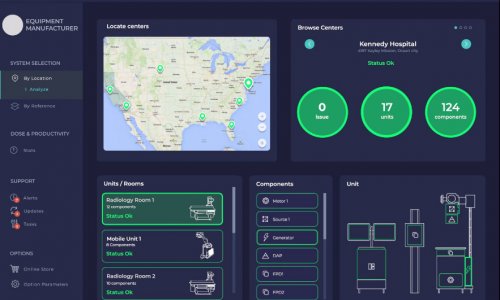Present and future clinical laboratory management systems
Exit the monoliths, enter diversity -IT for labs is continuously progressing; solutions in the European market are becoming ever more complex and richer in functionality – all occurring in parallel with consolidation of equipment suites.

To handle or manage the software systems that have evolved over the past years is now a serious challenge, according to chemist Dr Markus Neumann and physicist Heiko Kindler, who are currently creating cross-subsystem data mining tools to optimise quality management in the laboratory. We asked them how design concepts for next-generation systems would need to change to accommodate emerging needs
Outlining developments in IT for laboratories Dr Markus Neumann explained: ‘Over the years, all related disciplines – clinical chemistry, haematology, microbiology, transfusion, histology, histopathology, as well as hygiene, billing, quality management and documentation – were consolidated on one code base. The drivers were clinical labs whose staff had to use the entire spectrum of the functionality – even during night shifts, with only one team member present. From about 2000 onward, many clini cal labs therefore opted for that trend towards end-to-end systems. However, in privately owned labs a homogeneous user interface does not play a major role, and different IT systems may be in use for the lab’s sub-disciplines.
Could these morphologies co-exist, for example as Windows-based solutions with a uniform codebase and legacy systems?
‘Neither users nor manufacturers can opt for a two-tier landscape in the long run,’ thinks Heiko Kindler. ‘Vendors need to integrate product lines for cost reasons and users are asking for resilient standard software which allows for convenient upgrades and extensions. However, integration of established process know-how needs to accompany integration of data.’
‘Data integration,’ Dr Neumann added, ‘has prepared the stage for IT in the diagnostic lab in the past – managing testing equipment and importing patient data from administrative systems are well established IT functions; today; sophisticated interfaces, for order entry and result reporting are state-of-the-art.’ Dr Kindler: ‘Process integration is on the agenda of interoperability initiatives, such as IHE, with HL7 interfaces and TCP/IP or files as the current technical platform.
However, in order to integrate process know-how from legacy systems the embracement of service-oriented architecture (SOA) is a sine qua non. In a lab software market with diverse dedicated systems, investments will be future-proof thanks to SOA, interoperability, appropriate middleware, and proper orchestration of the solutions. This implies, for example, the implementation of a centralised electronic patient record in the lab and a “testing brokerage” tool managing the heterogeneous subsystems in accordance with the service requirements of each order.’
Asked to describe the future potential of this lab information management concept, Dr Neumann said: ‘Orchestrated IT, which integrates evolved process know-how is not only, a reasonable economic approach for consolidation of legacy IT systems, Dr Neumann responded when asked to describe the potential of this lab information management concept. ‘It also provides the technical base for the next step in clinical decision-making. There is a broad consensus in literature that up to sixty percent of diagnostic services in hospitals is performed in the lab. Therefore, knowledgedriven decision support will improve productivity, quality and precision in the lab. Finally, SOAbased services directly support the diagnostic pathways initiative, run by the German Society for Clinical Chemistry and Laboratory Medicine (DGKL).’ Details: www.labcore.de
10.07.2012











